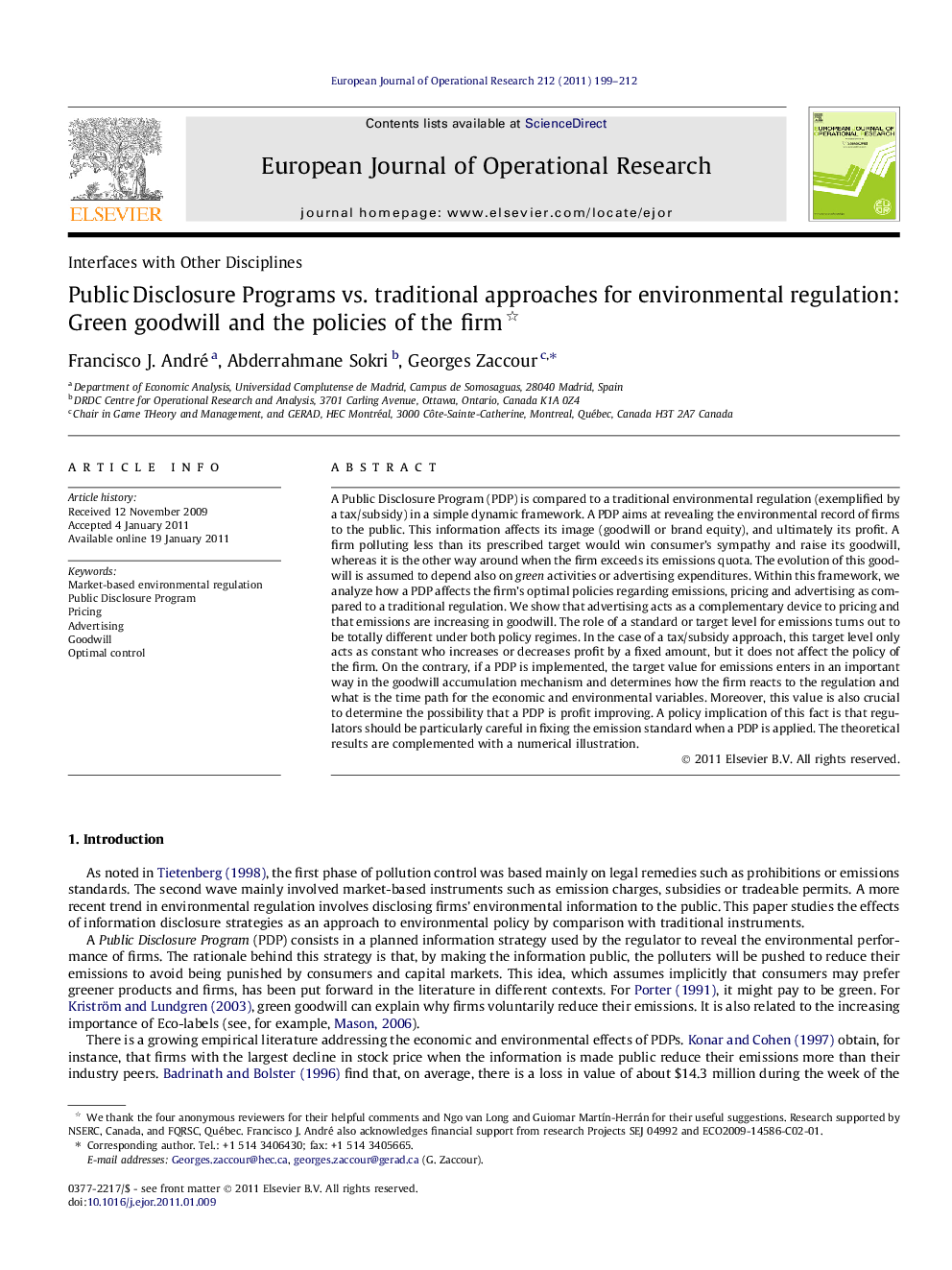| Article ID | Journal | Published Year | Pages | File Type |
|---|---|---|---|---|
| 477075 | European Journal of Operational Research | 2011 | 14 Pages |
A Public Disclosure Program (PDP) is compared to a traditional environmental regulation (exemplified by a tax/subsidy) in a simple dynamic framework. A PDP aims at revealing the environmental record of firms to the public. This information affects its image (goodwill or brand equity), and ultimately its profit. A firm polluting less than its prescribed target would win consumer’s sympathy and raise its goodwill, whereas it is the other way around when the firm exceeds its emissions quota. The evolution of this goodwill is assumed to depend also on green activities or advertising expenditures. Within this framework, we analyze how a PDP affects the firm’s optimal policies regarding emissions, pricing and advertising as compared to a traditional regulation. We show that advertising acts as a complementary device to pricing and that emissions are increasing in goodwill. The role of a standard or target level for emissions turns out to be totally different under both policy regimes. In the case of a tax/subsidy approach, this target level only acts as constant who increases or decreases profit by a fixed amount, but it does not affect the policy of the firm. On the contrary, if a PDP is implemented, the target value for emissions enters in an important way in the goodwill accumulation mechanism and determines how the firm reacts to the regulation and what is the time path for the economic and environmental variables. Moreover, this value is also crucial to determine the possibility that a PDP is profit improving. A policy implication of this fact is that regulators should be particularly careful in fixing the emission standard when a PDP is applied. The theoretical results are complemented with a numerical illustration.
